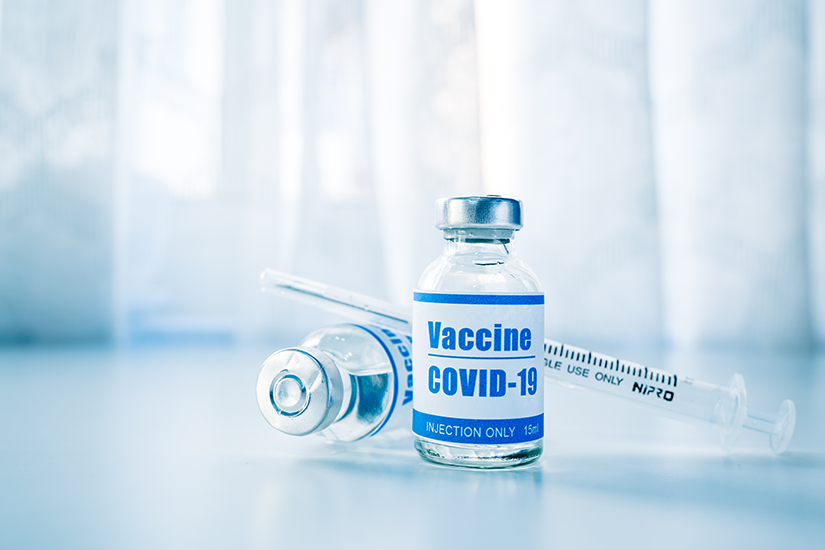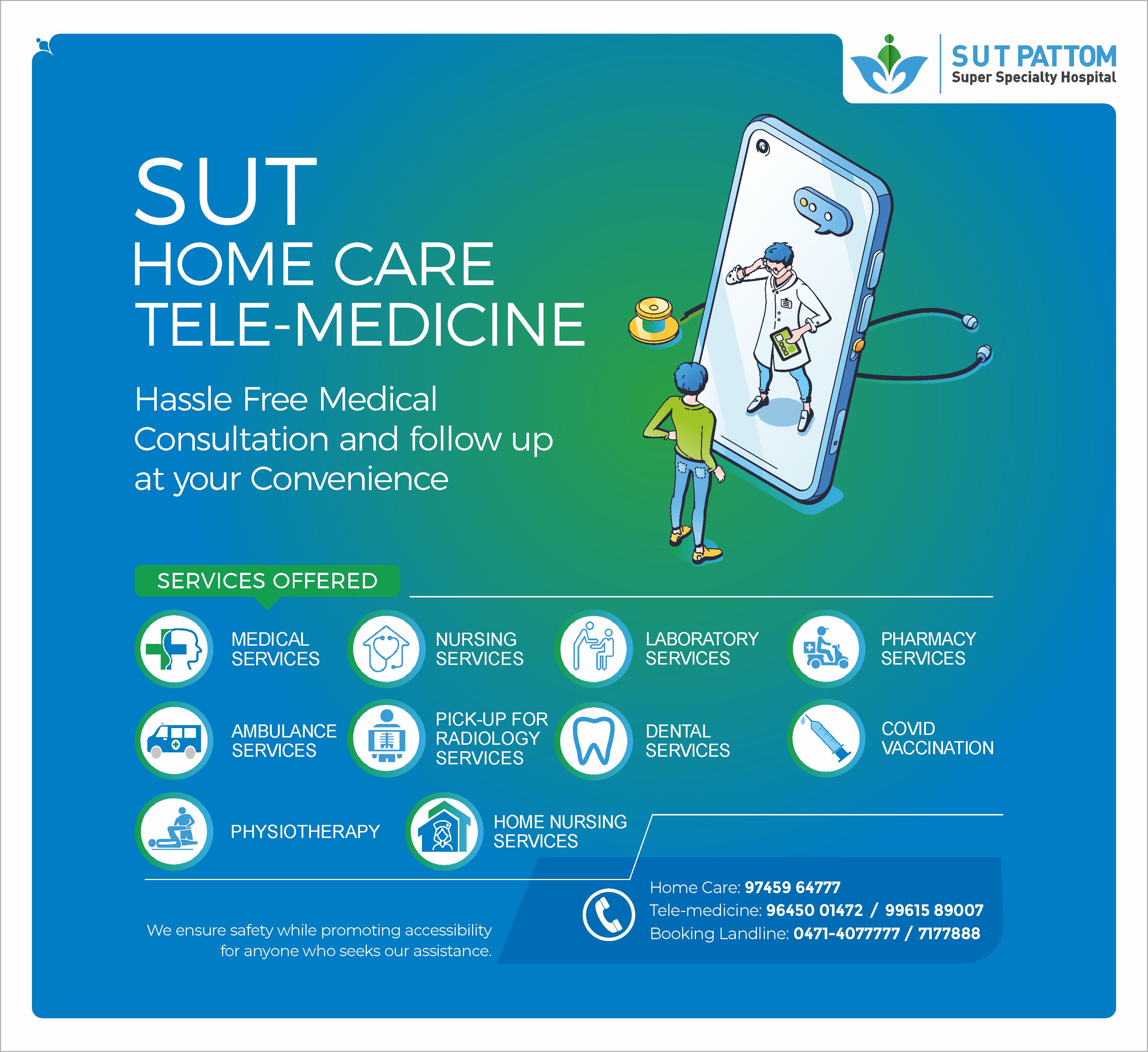- Emergency Ambulance Services
- 8606811111
- 0471-4077777, 0471-7177888
- gro@sutpattom.com
Save your feet: A Surgeon explains Diabetics, its treatment and control.
SUT Pattom Multi-Specalitity hospital is known for controlling and treatment of Diabetics in patients across India. Diabetic foot treatment is a rising treatment method and a procedure asked by doctors to follow. Dr Visakh Varma, Podiatric and Plastic surgeon from SUT Pattom explain the various cause of Diabetics and about diabetic foot treatment in Trivandrum. Dr Visakh is a well known diabetic foot specialist who can provide you with an overall view of Diabetics and associated treatment.
Diabetic foot.
Pain is one of the most unpleasant sensations we experience also a blessing in disguise. Pain indicates there is something wrong with the body and draws our attention to it. Any activity which causes pain is potentially injurious to health and should be avoided. (exceptions are medically administered injections). Ignoring pain can cause you to undergo bitter experiences later in life.
What is the problem?
The primary problem in diabetic foot is loss of pain sensation or altered sensation due to nerve damage called neuropathy. The patient who is unaware of any acute or subtle, chronic injury to the foot and continues to neglect it becomes an ulcer, abscess, gangrene or deformity of the foot. Acute (immediate )injuries like burns, pin/needle penetrations, abrasions cut injuries while trimming nails, shoe bites, scratch marks would require immediate medical attention. that usually would draw the immediate attention of the affected person. Normally, treatment and avoidance of weight-bearing till the pain subsides and the wound heals itself with neuropathy. The diabetic patient usually continues to walk on the injured foot resulting in worsening of the wound. A small wound should have healed with rest and treatment in a healthy person whereas a diabetic person very often needs admission, antibiotics and surgery. The second type (subtle /chronic) injury is something that happens very slowly, initially hidden from everyone but later progresses to adverse health conditions. The three most common types of such injuries are
1. Callosities
2.Ingrowing toenails and
3. Intertrigo
Callosities
A normal person cannot stand in the same position for long. This is because when a person stands he exerts pressure on certain points under his feet. The skin over these points is compressed between the bones of the feet and the hard surface outside.When the blood supply to the skin stops and the uncomfortable sensation is transmitted to the brain, the person changes position, pressure is transferred to another point and blood flow to the previous point is restored. This stoppage of blood flow is momentary in normal people but in a diabetic with neuropathy, this sensation is not transmitted soon enough resulting in the formation of layers of dead hardened skin called callosities. If callosities in feet continue to develop in the pressure point then they become hard gives a sensation of the foot hitting a stone. The soft tissue between the callosity and the bone breaks down resulting in diabetic foot ulcerations. Usually, the patient notices these diabetic ulcers on the feet once the callosity is removed or the ulcer gets infected releasing foul-smelling discharge./pus
Ingrowing toenails:
The toenails are supposed to grow straight over the edges and nails. Sometimes due to injuries to nailbeds, improper footwear and hereditary causes softening of nail tissue edges or tip of the toe. This results in injuries that later become infected. Since in a normal person pain develops soon after the nail starts pushing on the edges they trim the nail edges, but in a diabetic, since there is no sensation the nail edges continue to grow and damage the surrounding tissue causing an infection that very often results in the toe or higher amputations if neglected.
Intertrigo:
Intertrigo or fungal infection is a very common infectious disease in Kerala. This is because the humid climate and rainy climate make toe wet. Prolonged excessive moisture is ideal for the growth of fungus. These fungi slowly dissolve the skin barrier making them portals of entry for infection-causing, microorganisms, abscesses that compromise the blood supply to adjacent toes leading to gangrene.
The Second problem is decreased blood supply to the feet with big vessels called macroangiopathy and very small vessels reaching skin called microangiopathy. This is usually attributed to the high glucose levels in the blood that damage cells lining the lumen of blood vessels called the endothelium. Damage to endothelium makes it more prone to attract cholesterol deposits forming plaques that gradually obliterate the lumen of the vessel cutting off the blood supply. Since the blood supply to tissue decreases sufficient oxygen, nutrition and protection in the form of WBC(our soldier cells) and antibodies (our artillery)do not reach the injury-prone areas resulting in gangrene, formation and non-healing of ulcers.
The Third problem is decreased immunity. High blood sugar levels make the white blood corpuscles lazy by affecting their cell membrane. They become slow in their responses to target and eliminate the infection-causing microbes. Also, the blood with high sugar is the perfect medium for the growth of microbes providing enough and more nutrition for the growth and spread of the bacteria.
The Fourth and rarer problem is a deformity of the foot. This usually occurs due to damage and structural changes at the molecular level to the nerves, bones, muscles and tendons caused by their interaction with high blood sugar called glycosylation. This foot deformity shifts pressure from areas that are usually designed to withstand pressures to areas of the foot not having enough fat pad cushioning thereby resulting in callosities and ulcers on weight-bearing and walking. Also, deformed feet cannot be accommodated in normal shaped footwear so it makes them more prone to shoe bite injuries.
Where is the problem?
Diabetes is basically raised sugar or glucose levels in the blood. So anyplace where the blood flows through will be affected by diabetes. This means from head to foot diabetes takes its toll. The nervous system, the heart, the kidney, the liver the hands and the legs all are affected. Why foot requires special mention is because it is the part of the body that bears all the weight and is subjected to maximum physical trauma during walking. So the feet are most susceptible.
Also, the nerves and vessels to the feet are longest as they are most distant from the heart and spinal cord so they are exposed to a maximum amount of raised glucose levels. Hence the clinical effects of diabetes can be seen first detected from the leg. One of the first sensations to be lost in diabetes is vibration so to detect and assess the neuropathic damage it is necessary to do a test known as VPT (Vibration Perception Test) every 6 months. Also similarly, the vessels to the leg are affected and the effects can be detected in the initial stages by doing an ABI test or Ankle Brachial Index where the blood pressures of the leg are compared to that of the arm.
When is the problem?
Initially, we were under the impression that it is only after long years of diabetes that the nerves are affected but tests are showing that neuropathy is affected in 49 % of patients by the time we detect increased sugar levels called IGT or impaired glucose tolerance even before diabetes levels are reached. Many times it is the clinical symptoms of neuropathy like tingling sensation or cramps of feet that raise suspicions, for which blood glucose levels are tested. Similarly, vasculopathy or damages to blood vessels happens early, especially in the small vessels or microvasculature. These changes can easily be seen in the vessels of the retina of the eye which may reflect the changes in the vessels of the feet.
What is the extent of the problem?
Every 30 seconds a limb is lost to diabetes. India will very soon be the diabetic capital of the world, at present 2nd place with 72.96 million diabetics patient.15-20% of these diabetics will develop ulcers on the feet and 12% of them will end up with amputations. A person after Below-knee amputation has a 50% chance of having another amputation within 5 years. Once amputation is done the workload on the heart increases from 30 to 50% depending on whether it is below or above the knee, making the patient almost 4 times more prone to heart failure. Another eye-opening statistic is that in patients with foot ulcers the 5-year mortality is 40% i.e of 100 people with diabetic foot ulcers only 60 will be alive after 5 years. After an amputation, the mortality rate of 5years is 45% that is of 100 people following amputation 45 will die before completing 5 years.
What causes the Problem?
Raised glucose levels lead to damage of nerves, blood vessels and affect immunity. So there is a loss of sensation which results in the formation of ulcers followed by non-healing of the ulcer because the patient continues to walk. Decreased blood supply means not enough nutrition reaches the ulcer. The white blood corpuscles(which are already weakened by diabetes) invites immunity agents to the site. So the ulcer gets infected easily and also spreads easily because our immunity or defence mechanism is very weak. Once it starts spreading all over the body, the infected part which cannot be further treated or saved by medicine has to be removed or amputated.
How to prevent the problem?
This can be done by taking care of two things :
1)Good control of blood sugar levels.
2) Adequate protection for your feet.
To control your sugars you have to follow the advice of your diabetologist/physician considered as the ten commandments for healthy feet.
1. DO NOT walk barefoot. Buy 2 pairs of diabetic footwear with MCR/MCP -microcellular rubber/microcellular polymer insoles for inside and outside use.
2. INSPECT the feet daily for blisters, wounds, bleeding, smell, increased temperature, pressure points of feet and oedema. Use a mirror to inspect your feet if you cannot bend the knees enough to directly examine them or ask someone else.
3. DO NOT apply hot fomentation/cold compresses/electric heating pads, strong balms or pumice stone to rub on the legs and feet
4. USE correct footwear. Choose your footwear after consulting your doctor. Always wear footwear with socks with loose elastic. It is better to purchase footwear during the evenings as foot size is maximum due to evening swelling.
5. DO NOT walk bearing weight on an affected /ulcerated foot or after surgery on the foot.
6. DO NOT sit cross-legged for a long time
7. DO NOT remove footwear during travel and expose your feet to a hot or cold surface
8. CUT the nails regularly, trimmed square. If it is too thick and too deformed to cut safely by oneself get help from a podiatrist. We have special tools to manage such nails
9. DO NOT cut corns /calluses with a blade or a knife. Home surgery is dangerous. Get help from a trained podiatrist who can do it for you safely using different special operative techniques
10. CLEAN the feet twice daily with soap and water . Wipe the web spaces dry and apply softening agents.
Few guidelines for choosing footwear
Wide toe box: so that toes will not get crowded and compressed together
Soft inner lining: inside the straps and upper body of the footwear so that feet are not injured
Heel counter: for better protection and stability of the foot
Velcro fittings: On all straps and no metal buckles to be used.Adjustable straps to accommodate for edema. Elastic bands should be avoided to prevent constriction of blood flow.
Best insoles: MCR/MCP/EVA/Plastizote with 30 shore hardness
Leather upper: soft leather upper body with soft linings for comfort.
Rigid and tough outsole: to protect the feet from penetrating injuries and helps control the muscles of the feet.
Lightweight: to give more comfort and no ankle joint pains for smooth walking
Aesthetically pleasing: should look like any other footwear so that patients will not hesitate to wear it outside
Damage control:
Let us look into each problem graded on basis of severity
Callosity: even if we use proper footwear at times the callosities can occur and have to be removed /scraped or abraded in time so that they do not form ulcers
Intertrigo/fungal infection between the toes . This usually happens because of increased moisture and crowding of toes preventing air circulation. So simple steps are to keep the space between toes dry, apply anti-fungal ointment and separate the toes with a simple gauze piece
Ingrowing toenails and infection. Infections resulting from IGTN (ingrowing toenails ) may initially be controlled by antibiotics but it tends to recur because the sharp edge of the nail continues to bite into the toe. The treatment for it is to remove that part of the nail and destroy the part of the nail bed from which originates either using a chemical or heat. This is usually done in operation theatre after numbing the toe with injection.
Cellulitis of foot or leg. This is the earliest sign of infection of the leg. The affected part toe, sole, ankle, heel or leg shows reddish discolouration, may be associated with swelling and feels hotter than the rest of the body. It is a dangerous sign and should be taken seriously. Antibiotics need to be prescribed, dressings may be needed and most importantly non-weight bearing is mandatory for early and complete resolution of the infection.
Abscess: This is the next stage where the infection has spread deeper and results in the formation of the collection of pus. This requires cleaning the infection surgically, sending the pus or tissue from the abscess for culture to see which organisms are growing and which antibiotics will kill them.
Osteomyelitis: Sometimes the infection reaches the bone and infected pieces of bone have to be removed and sent to study them to know what microorganisms are causing the infection and to treat them accordingly.
Necrotising fasciitis: in this stage, the infection starts spreading rapidly in a layer below the skin. It is a surgical emergency that needs antibiotics and early surgery to control the infection.
Gangrene: In this stage, the part of the foot dies but remains attached. Usually, this happens because of the lack of blood supply to the part or rapid infection. It has to be removed surgically or amputated, ideally after measures are taken to increase the blood supply to the remaining parts.
Deformity:
Usually, the blood supply to the feet decrease in diabetes but in some cases paradoxically there is an increase in blood supply because of damage to the nerves controlling the blood vessels to the leg. This results in washout of the calcium resulting in softening of bones, small fractures and changes in the shape of the foot. These changes are together termed Charcotβs foot. In the initial stages, this may be even mistaken for cellulitis and treated incorrectly with antibiotics. The treatment may include putting the foot in plaster or in special footwear to prevent further fractures and deformity. In case of severe deformity correction of alignment of bones may be required using many screws and plates followed by a lifelong commitment to wearing special footwear while walking.
Another type of deformity occurs in the toes called clawing, where the toes become bent. This is due to damage to nerves and the weakening of certain groups of muscles that control toes. Specially designed footwear or in some cases surgery may be required to prevent the formation of ulcers and straighten the toes.
Correction:
The steps are relatively are easy to understand but difficult to implement.
- Control of sugar levels by adjusting the dose of insulin
2. Control of infection with antibiotics and surgical removal
3. Amputation of the dead part or that part that is too infected to be saved and is a threat to life and the rest of the limb
4. Improving the blood supply by angioplasty or bypass(similar to the heart) so that healing is improved
5. Application of VAC or Vacuum-assisted closure devices that improve blood supply, continuously suck and remove the infected material and decrease the size of the wound.
6. Grafting or flap surgery uses skin or other body parts to cover the wound and heal it.
7.Designing footwear and prosthesis for the remaining or reconstructed foot to prevent recurrence of problems and rehabilitate the patient.
All said and done the after spending nearly a decade focussing on this grave problem of diabetic foot amputation that we are facing I realised that the solution does not lie in complicated surgical gymnastics or high-end antibiotics but in simple measures like awareness, proper foot care, appropriate footwear and timely intervention. Consult diabetic foot treatment hospitals in Trivandrum and check your blood sugar level to get peace of mind from diabetics.









